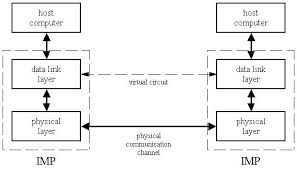DATA LINK LAYER AND ITS ERRORS
DATA LINK LAYER AND ITS ERRORS:-
As we know the OSI model is a combination of 7 layers out of that the data link layer is known for its variable performances and variety of functions according to its hardware protocol.
There are various functions that a data link layer takes care of and they are:
- Network layer communication
- Sedimentation and reassembly
- Bit ordering
- Communication with the physical layer
- Communication methodology with all the layers.
The upper layer data grams sedimentation are the packets that are sediment and is handled by the communication of hardware’s.
Bit ordering: the data link layer is systemized into frames before any kind of transmission takes place.
All kind of formatting of the files like stop bit, start bit all are done through the bit ordering.
All kind of management of any Indian issues are all done here.
COMMUNICATION INVOLVING PHYSICAL LAYER:
The data link layer sublimes a very convenient and systematic transmission across its line. The main concern of the data link layer is:
- Physical addressing
- Network topology
- Error notification
- Physical link management
In case of OSI model the physical and data link layer are responsible as the network interface adapter.
TYPES OF ERROR:
The types of error may be of three types:
- Syntax error
- Runtime error
- Logical error
SYNTAX ERROR:
Any type of error that occurs during insertion of codes is called syntax error. i.e there is a mistake in the syntax of the codes. The visual basics actually checks the code and the editor windows does there correction. Any kind of misspelling in a word is also considered as the syntax error.
The syntax type of errors are very regular errors and can be corrected very comfortably.
These error can be removed as soon as there is trace of an error. There is a special way to correct the syntax error that is the option explicit method which removes this kind of error by forcing it to announce in advance all the variables that are used or to be used in the code and these typographic error can be caught and fixed.
RUN TIME ERROR:
The run time error is such type of error which occurs during run time application error. The run time error can be seen after we compile codes. The run time error is that king of error where the codes will be perfectly correct and will have no syntax error but still they will not execute this is only due to the run time error.
LOGICAL ERROR:
Logical error are errors which are generally created due to a user and their actions. It can be due to mis typing or so on.
ERROR DETECTION:
The system through which a fault can be detected is called error detection. Almost all the communication channel consist of noise due to which an error is detected. Error detection is a method that shows the error whereas the error correction is a method where after the detection of error the error is corrected.
There are some standard definition of error detection and correction.
ERROR DETECTION:
Any kind of surveillance of error due to noise and other disturbances when the transmission takes place form source to the receiver.
Error correction:
The action after the detection of the error is called error correction.
RETRANSMISSION:
Is the synopsis or minor image of ARQ (automatic repeat request) which is actually explained to a lay man as resending of packets which may be lost or damaged. This is a term mostly referring to the basic mechanism used by the protocols meant for operating a cluster of switched computer network so as to provide a reliable communication.
Such links or network are mostly unreliable and does not give any guarantee so deliver a message on line i.e it may delay or damage or may packets of data networks.
QUESTIONS AND ANSWERS
1.Does the internet protocol suit consist of any low level network library?
ans-: Yes it contains low level network libraries – link layer,internet layer and the transport layer.
2.List the responsibilities of data link layer?
ans- Basically the data link layer transforms the physical layer as a raw transmission facility, to a reliable link and is responsible for node to node delivery.
a. Framing
b. Physical Addressing
c. Flow Control
d. Error Control
e. Access Control
3.Define routing protocol?
ans-:Routing protocol gives an information as to how the routers communicate, disseminating the information which enables the routers to be selected between two nodes in a specific network.
4.What is the purpose of routing protocol?
ans- Routing protocol interacts as well as informs the hardware that is needed for transmitting the data between the transmitter and the receiver for transmission over network.
5.Enlist some of the services provided by the data link layer?
- Encapsulation of the network layer
- frame synchronization
- logical control
Gate Syllabus-
1. Gate syllabus for Electronics and Communication Engineering
2. Gate syllabus for Computer Science and Information Technology
IES Syllabus-





Tell us Your Queries, Suggestions and Feedback